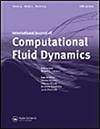Prediction of Flow Field Over Airfoils Based on Transformer Neural Network
IF 1.3
4区 工程技术
Q4 MECHANICS
International Journal of Computational Fluid Dynamics
Pub Date : 2023-10-12
DOI:10.1080/10618562.2023.2259806
引用次数: 0
Abstract
AbstractAirfoil flow field data acquisition is pivotal to the study of aerodynamics, traditionally relying on time-consuming computational fluid dynamics simulations or expensive wind tunnel tests. Herein, we introduce a new methodology leveraging Transformer Neural Network (TNN), which differs from conventional methodologies by employing self-attention mechanisms, to effectively predict these critical flow field data using historical data. A comprehensive set of experiments demonstrates the TNN model’s exceptional predictive accuracy, achieving over 95% across various airfoils under various operating conditions. Beyond accuracy and efficiency, we introduce an attention principle in our TNN model enhancing its interpretability. By aligning the TNN model’s attention distribution with the aerodynamic principles of airfoils, we illustrate how it utilises these geometric attributes in its predictions, thereby offering theoretical backing to its predictive outcomes. Our TNN model’s commendable accuracy, efficiency and interpretability illuminate the pathway for continued exploration in the fusion of deep learning with computational fluid dynamics.KEYWORDS: Deep learningTransformer Neural Networkairfoilflow field Disclosure statementNo potential conflict of interest was reported by the author(s).Data Availability StatementThe data that support the findings of this study are available from the corresponding author upon reasonable request.Additional informationFundingThis work was supported by Scientific Research Project of Department of Education of Hunan Province [grant number 21C1577]; Natural Science Foundation of Hunan Province [grant number 2022JJ60090].基于变压器神经网络的翼型流场预测
摘要翼型流场数据采集是空气动力学研究的关键,传统上依赖于耗时的计算流体动力学模拟或昂贵的风洞试验。在此,我们引入了一种利用变压器神经网络(TNN)的新方法,该方法与传统方法不同,它利用自关注机制,利用历史数据有效地预测这些关键流场数据。一组全面的实验证明了TNN模型的卓越预测精度,在各种操作条件下的各种翼型中达到95%以上。除了准确性和效率之外,我们在TNN模型中引入了注意原则,增强了其可解释性。通过将TNN模型的注意力分布与翼型的空气动力学原理对齐,我们说明了它如何在预测中利用这些几何属性,从而为其预测结果提供理论支持。我们的TNN模型值得称赞的准确性,效率和可解释性为深度学习与计算流体动力学融合的持续探索指明了道路。关键词:深度学习变形神经网络翼型流场披露声明作者未报告潜在利益冲突。数据可用性声明支持本研究结果的数据可根据通讯作者的合理要求提供。项目资助:湖南省教育厅科研项目[批准号:21C1577];湖南省自然科学基金[批准号2022JJ60090]。
本文章由计算机程序翻译,如有差异,请以英文原文为准。
求助全文
约1分钟内获得全文
求助全文
来源期刊
CiteScore
2.70
自引率
7.70%
发文量
25
审稿时长
3 months
期刊介绍:
The International Journal of Computational Fluid Dynamics publishes innovative CFD research, both fundamental and applied, with applications in a wide variety of fields.
The Journal emphasizes accurate predictive tools for 3D flow analysis and design, and those promoting a deeper understanding of the physics of 3D fluid motion. Relevant and innovative practical and industrial 3D applications, as well as those of an interdisciplinary nature, are encouraged.

 求助内容:
求助内容: 应助结果提醒方式:
应助结果提醒方式:


